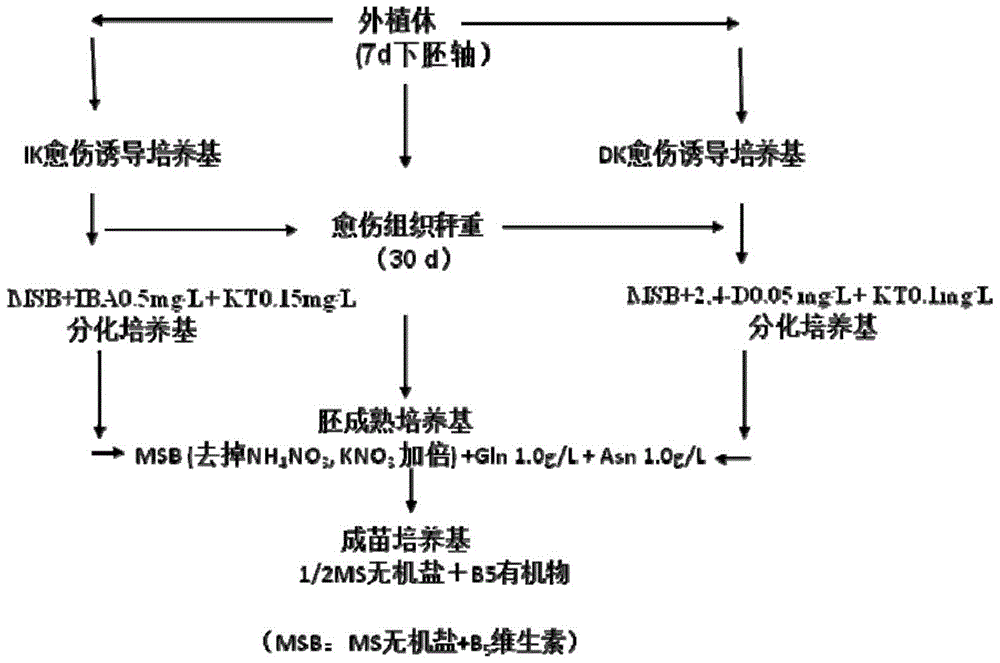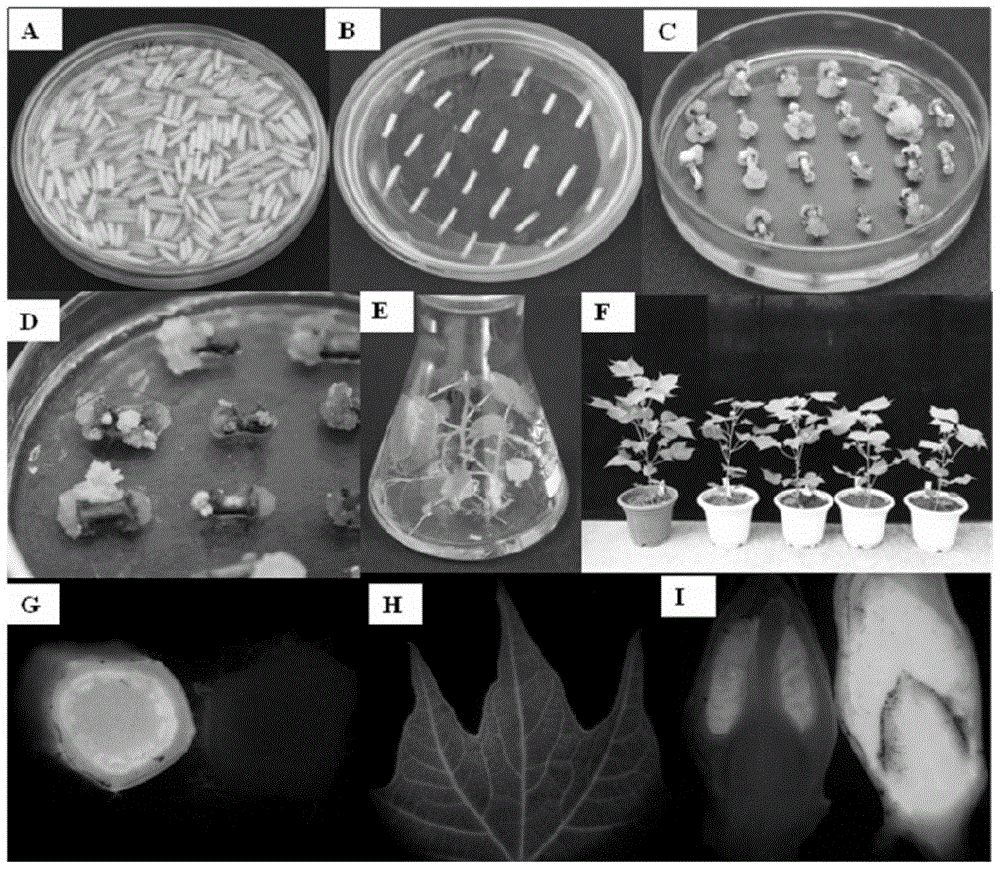A method of increasing the cotton regeneration and conversion efficiency and applications
A genetic transformation method and cotton technology, applied in the field of improving cotton regeneration and transformation efficiency, can solve the problems of low transformation efficiency, long transformation cycle, genotype aging, etc., and achieve the effects of improving regeneration ability and shortening breeding cycle.
- Summary
- Abstract
- Description
- Claims
- Application Information
AI Technical Summary
Problems solved by technology
Method used
Image
Examples
Embodiment 1
[0050] Example 1 Preliminary evaluation test of cotton regeneration ability under in vitro culture conditions
[0051] In order to verify the technical route of the present invention, four cotton varieties Y668 (Crop Research Institute of Henan Academy of Agricultural Sciences), Kezi Cotton 312 (Cotton Research Group of Huazhong Agricultural University) and YZ-1 (Cotton Research Institute of Chinese Academy of Agricultural Sciences) Comparing regeneration ability (control) with Simian No. 3 (Cotton Research Group of Huazhong Agricultural University) (these four materials are conventional cotton strain materials, the public can buy or obtain from relevant units), cotton somatic embryogenesis The technical process of process and regeneration capacity comparison is as follows: figure 1 shown.
[0052] The steps are as follows:
[0053] (1) Cultivation of aseptic seedlings: peel off the seed coats of cotton seeds after delinting with sulfuric acid and soak them in 0.1% mercuric ...
Embodiment 2
[0060] Example 2: Using Y668 as the transformation recipient, Agrobacterium-mediated GFP genetic transformation
[0061] Agrobacterium strain EHA105 and plasmid vector pBIN m-gfp5-ER (see Jin et al., 2012) are used for genetic transformation of cotton, and the T-DNA structure of the plasmid is shown in figure 2 . The procedure for transforming cotton hypocotyls with Agrobacterium is as follows: pick plump and healthy cotton seeds and peel off their seed coats, soak them in 0.1% HgCl2 for 10 minutes, and wash them three times with sterile water. Inoculate the obtained sterilized cotton hypocotyls on the germination medium of sterile seedlings, cultivate them in a 28°C incubator for 4-6 days under dark conditions, and cut the hypocotyls of sterile seedlings into 0.5-0.8cm segments , inoculated in 0.5OD Agrobacterium suspension suspension with MGL, after infecting 10mim, blot the bacterial solution on the hypocotyl surface with sterile filter paper, and inoculate the hypocotyl ...
Embodiment 3
[0062] Example 3 The breeding process of Jin 668 and the comparison of transformation and regeneration efficiency of different generations of Jin 668
[0063] Seeds harvested from selfing of Null plants were used as targets for domestication of regenerative capacity. Pick plump and healthy cotton seeds and peel off their seed coats, soak them in 0.1% HgCl2 for 10 minutes, and wash them with sterile water for 3 times. Inoculate on the germination medium of sterile seedlings, culture in a 28°C incubator for 4-6 days under dark conditions, take the hypocotyls of sterile seedlings and cut them into 0.5-0.8cm sections and inoculate them on callus induction medium (MSB +2,4-D0.1mg / L+KT 0.1mg / L+3% Glucose+0.25% Phytagel, pH5.9), subculture once every 1 month until embryogenic callus (or somatic cell embryo). Then the embryogenic callus or somatic embryos were transferred to differentiation medium until regenerated seedlings were obtained. The obtained seedlings were transferred to...
PUM
 Login to View More
Login to View More Abstract
Description
Claims
Application Information
 Login to View More
Login to View More - Generate Ideas
- Intellectual Property
- Life Sciences
- Materials
- Tech Scout
- Unparalleled Data Quality
- Higher Quality Content
- 60% Fewer Hallucinations
Browse by: Latest US Patents, China's latest patents, Technical Efficacy Thesaurus, Application Domain, Technology Topic, Popular Technical Reports.
© 2025 PatSnap. All rights reserved.Legal|Privacy policy|Modern Slavery Act Transparency Statement|Sitemap|About US| Contact US: help@patsnap.com



